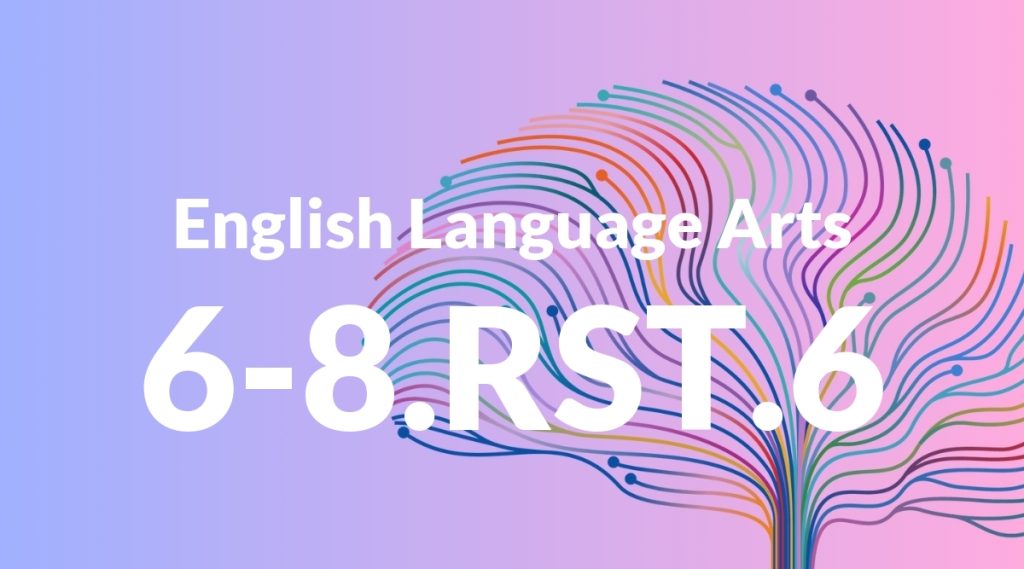Standard: 6-8.RST.6 – Analyze the author’s purpose in providing an explanation, describing a procedure, or discussing an experiment in a text.
Grade level: Grade 6-8
Subject: English Language Arts
Domain: Science & Technical Subjects
Teacher Overview
This standard focuses on helping students understand why an author writes a scientific or technical text, whether to explain a concept, describe a procedure, or discuss an experiment. It is crucial as it develops critical reading skills necessary for comprehending complex texts in higher grades and real-world applications. Students should be familiar with different text structures and have the ability to identify the main idea and supporting details.
Mastering this standard will enable students to critically evaluate scientific and technical texts, preparing them for more advanced studies and real-world applications.
Common Misconception 1
A common misconception is that all scientific texts are written solely to inform. This is incorrect because scientific texts can also aim to explain procedures or discuss experiments.
Intervention 1
Teachers can use a variety of texts with different purposes and guide students in identifying the specific purpose of each text.
Common Misconception 2
Another misconception is that scientific texts are entirely factual with no interpretation. In reality, authors often interpret data and discuss implications, which adds a layer of analysis.
Intervention 2
Teachers should highlight and discuss sections of scientific texts where the author interprets data or provides analysis, helping students recognize these elements.
Prerequisite Knowledge
Students should have a basic understanding of different types of texts (narrative, expository, technical) and be able to identify the main idea and supporting details in a text.
Subsequent Knowledge
Students will develop the ability to critically evaluate scientific and technical texts, understanding the nuances of how information is presented for different purposes, and will be better prepared for high school level science and technical reading.
Instructional Activities
- Group discussions analyzing different scientific texts
- Individual assignments identifying the author’s purpose in selected articles
- Class projects creating presentations on the purpose of various scientific texts




